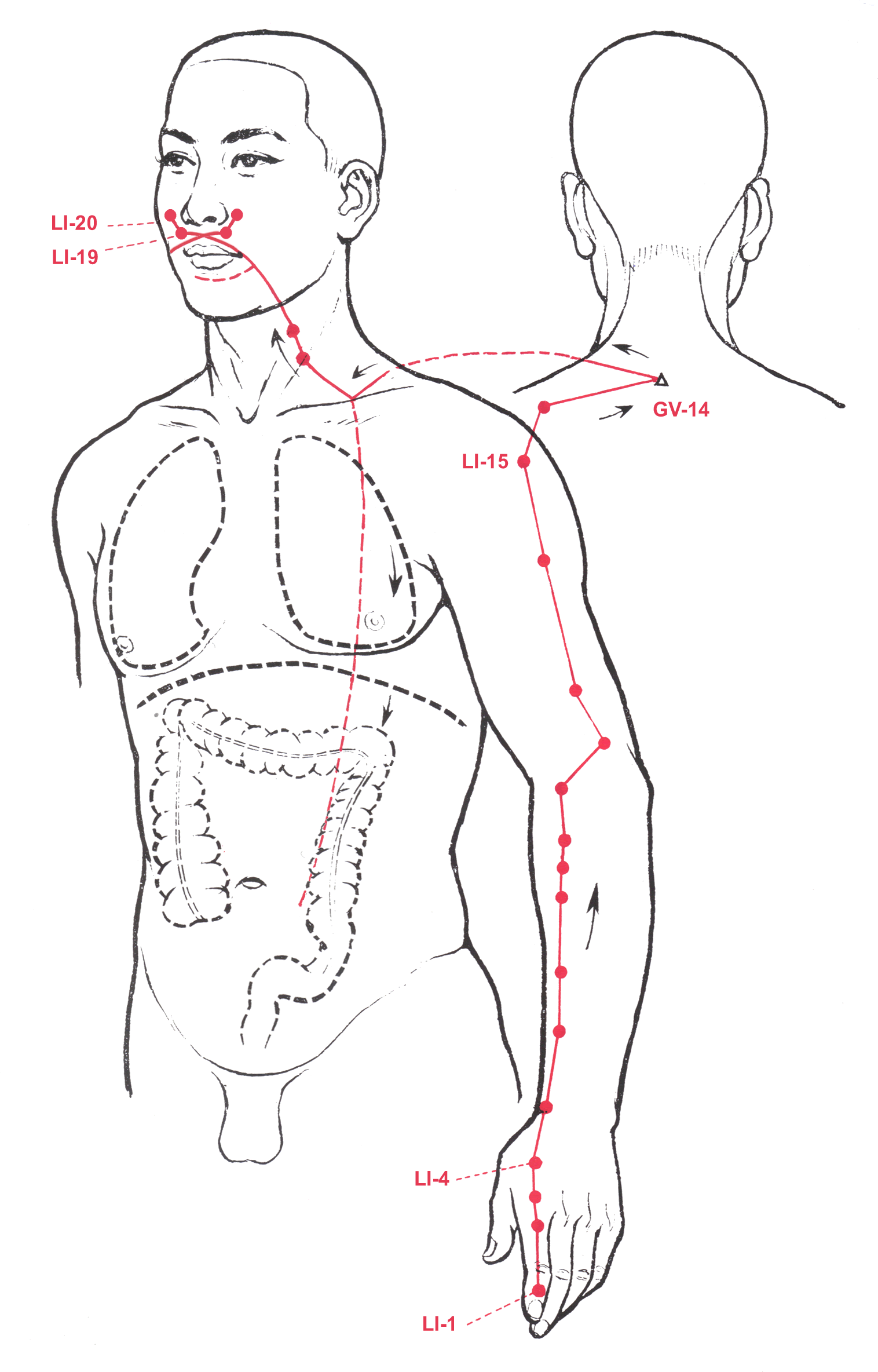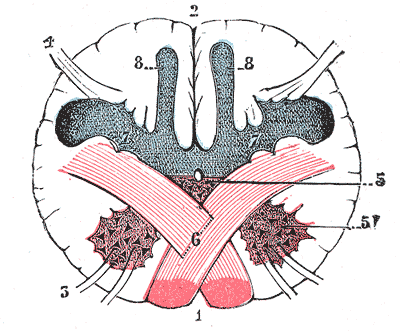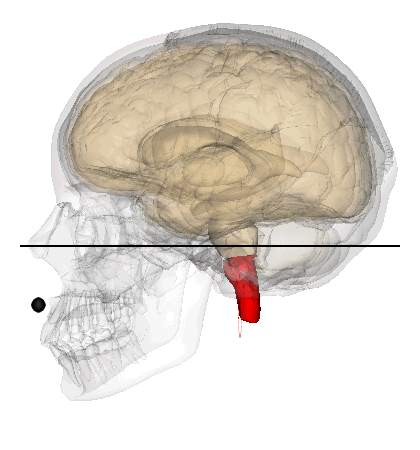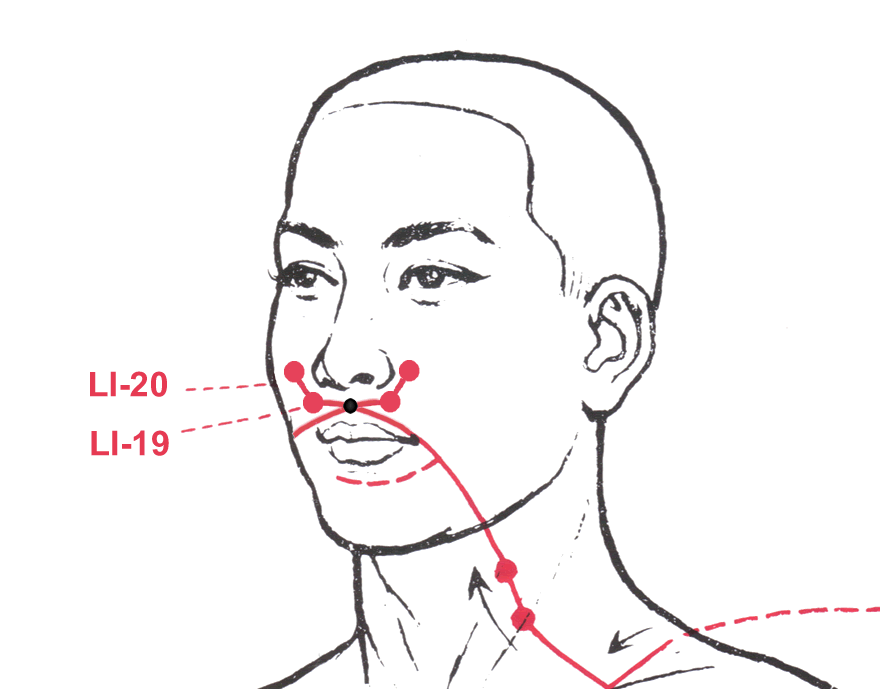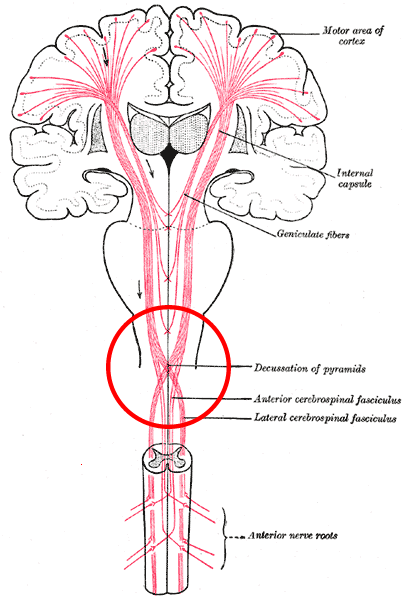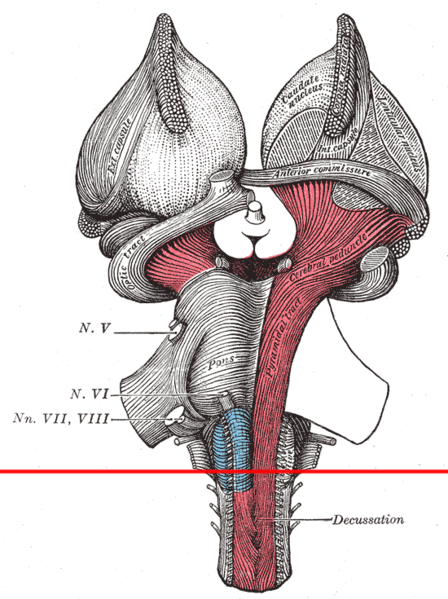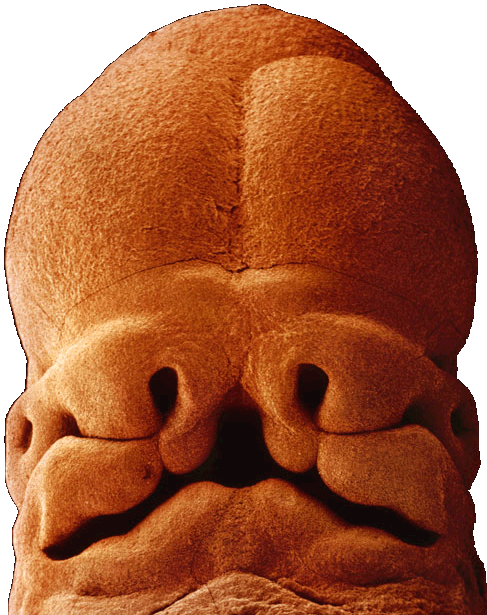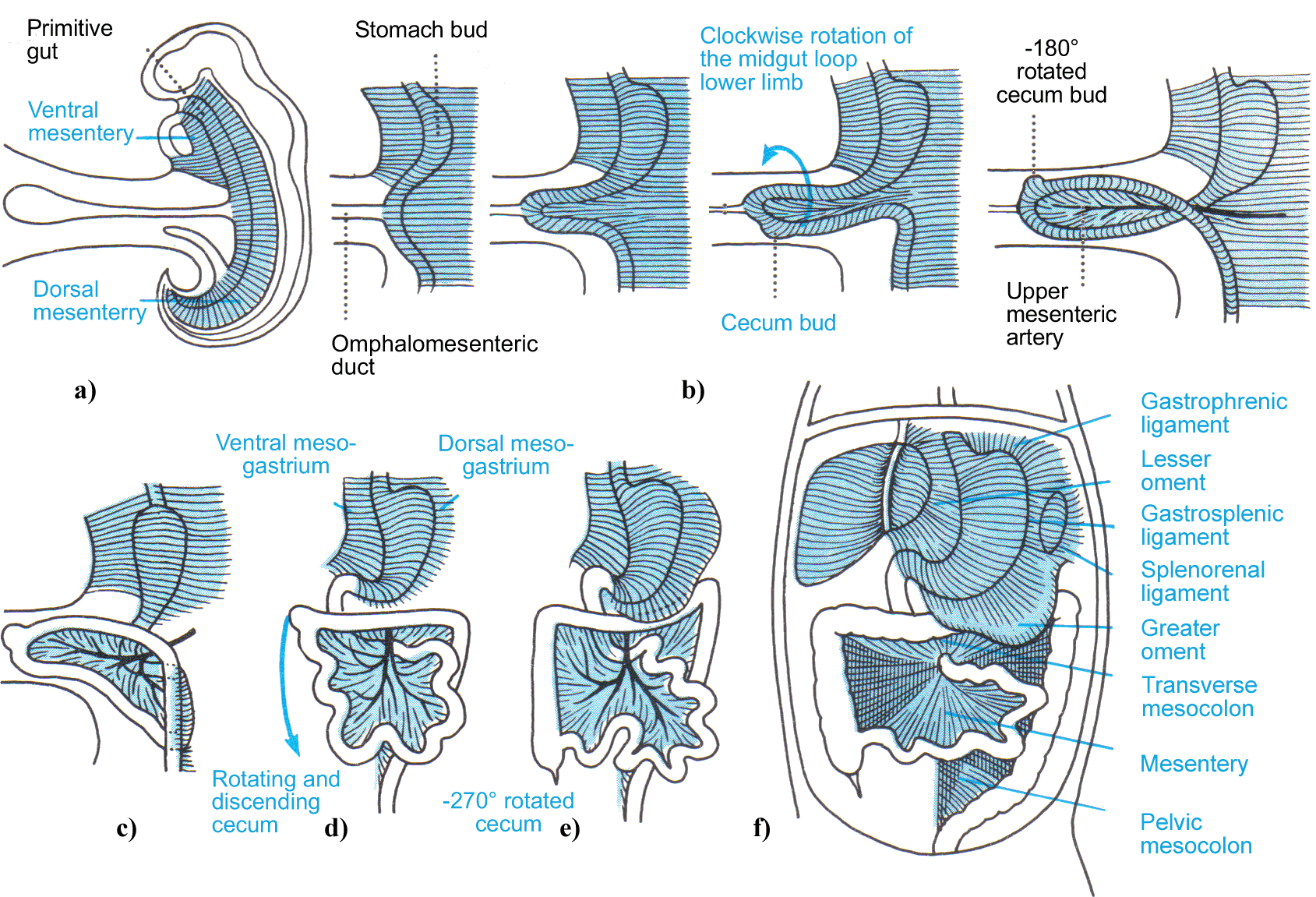|
Right and left branches of large intestine meridian cross in a very special zone home/table of contents - previous - next Now we want to show the reader how other unusual behaviour pattern of an acupuncture meridian corresponds to an exact anatomic structure. This is also an exception. In fact, single or multiple crossings among meridians pertaining to different organs are common (e.g. the three yin meridians of the lower limb at the point SP-6). Nevertheless the only meridian that crosses the homologue on the opposite side of the body is the Large Intestine (LI) meridian. This crossing takes place at the junction of the upper third and lower two thirds of the philtrum, or the groove in the upper lip. The red line in the picture on the right shows the path and points of the Large Intestine meridian (the internal path is dashed). It starts from the tip of the index finger, runs upwards along the arm and shoulder, goes backwards to the seventh vertebra, runs upwards and obliquely to the neck and comes through the jaw. It curves around the upper lip and crosses the opposite meridian at the philtrum. From here, the left meridian goes to the right and the right meridian goes to the left, to either side of the nose, where they end before connecting to the Stomach (ST) meridian. The point where the two large intestine meridians cross each other pertains to the Dumai or Governor Vessel (GV-26), the "extraordinary" meridian (see it here), that in its superficial path traces out the posterior median line, from the apex of the coccyx along the spine and skull to the mucosa above the incisor teeth, where it stops. With the skull in the "Frankfurt plane" position, the philtrum (with the afore-mentioned crossing point) is in correspondence with the decussation of pyramids, at the level of the second cervical vertebra. Is it just a lucky combination that the only direct crossing between the right and left meridian branch of the same organ corresponds to the sole macroscopically visible crossing of the central nervous system?
In the picture below you can see the decussation of pyramids on a transverse section.
The image on the right is the result of a sagittal CT (X-ray Computed Tomography), executed on a patient with the skull on the Frankfurt plane (red line). The arrow indicates where the decussation of pyramids in the medulla oblongata is. The animated picture below left shows the coincidence on the sagittal and tranverse planes in the skull between the philtrum (black circle) and the decussation of pyramids in the brainstem (red). The black line represents the "Frankfurt plane". The picture below right shows the details of the crossing over the philtrum (sutura inter-maxillaris) between the right and left branches of the large intestine acupuncture meridian.
not to incur
misinterpretation, the decussation of pyramids is visible to naked
eyes, as deducible from the picture above right According to the description given in the Classics (see the first picture above on the right), before passing over the neck and joining the upper lip, where we have seen its right and left branches cross in correspondence with the philtrum, the large intestine meridian begins its pathway from the tip of the index finger, runs over it, over the metacarpal bone, forearm, elbow and arm on the external edge. It surrounds the shoulder joint and from the LI-16 Jugu point, goes backwards to meet the GV-14 Dazhui point of the Governor Vessel (another crossing?), one of the eight Extraordinary meridians, below the 7th cervical spine. Seen from the back, this pathway seems to trace out both the profile of the arms and shoulders and that of the three segments of the large intestine: right, transverse and left colon. Though it is not a double organ like the kidneys, among the abdominal organs the large intestine is the one that has the greatest lateral symmetry and whose two sides are connected (crossed?) via the transverse colon. 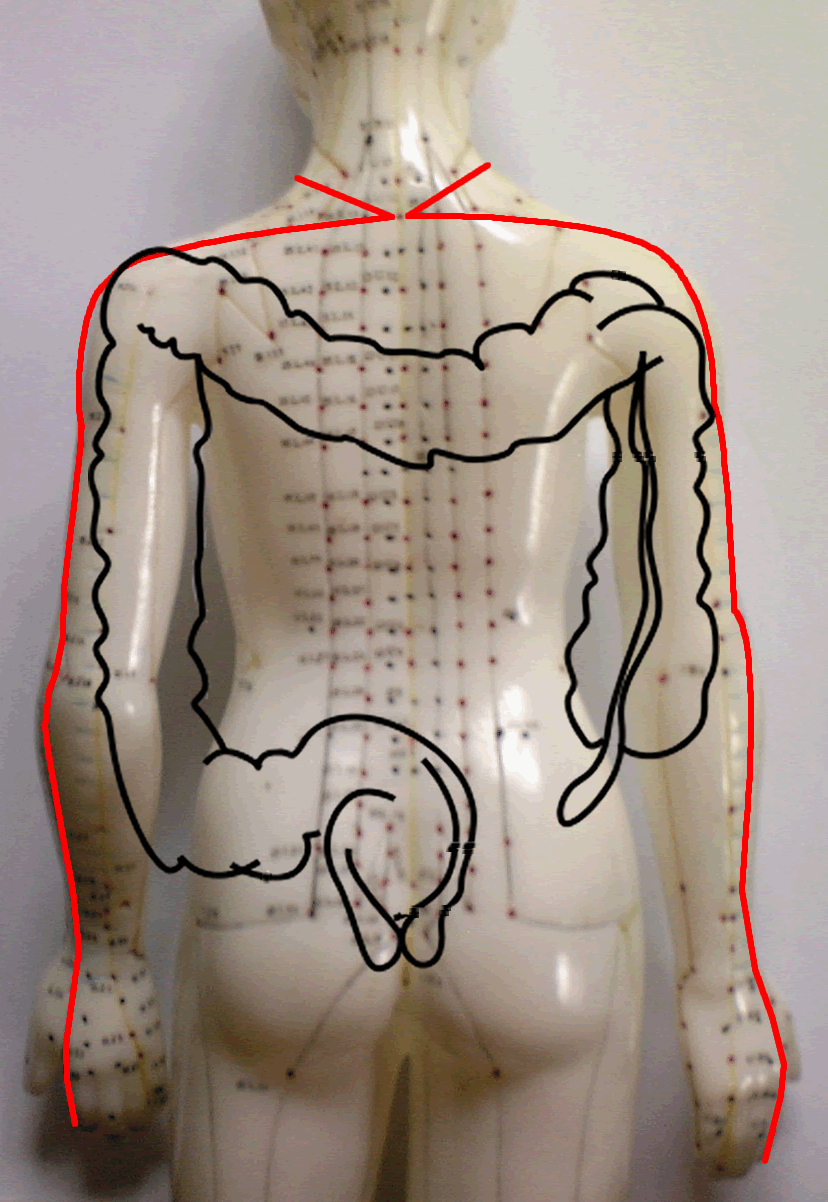
As it is illustrated
in the pictures below, the small and large intestine develop from the
primitive midgut by forming a two-limb loop on the sagittal plane (a), which
detaches itself just below the duodenum that is already taking the shape of
a semicircle opened on the left. The loop herniates physiologically and
temporarily into the umbilical cord (b). Making a 270 degrees global
counterclockwise rotation, the loop first becomes horizontal from vertical
(c), then its lower limb takes progressively the shape of the large
intestine, crosses and overcomes the upper limb (d) that has already begun
folding like an "accordion" to form the small intestine, and rotates itself.
The cecum reaches its definitive position in the right iliac fossa (e), so
that the large intestine circumscribes completely the small intestine (f).
|
